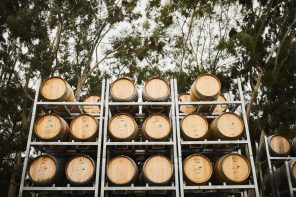After arriving in New Zealand, Fuminobu Nakatani completed a commerce degree at the University of Auckland. At the same time, he started managing Japanese restaurants around Auckland. “My diners always expected me to know about saké, so I started teaching myself by reading books and visiting local saké breweries,” Nakatani told Restaurant and Café.
This education recently reached new heights, when Nakatani completed the Wine & Spirit Education Trust Level 3 Award in Saké through the Prince Wine Store in Melbourne, becoming New Zealand’s first qualified saké professional. The WSET in London is an accredited Awarding Body and one of the most prestigious global educators of the alcohol beverage market. Their qualifications are recognised as the international standard in wine and spirit knowledge, “so my qualification is something I’m very proud of.” Nakatani was taught about the saké industry, the principles behind storage, selection and service.
Kiwi diners are often uneducated about saké, according to Nakatani, and fear trying it. There are basic misconceptions that he likes to clarify with diners straight away. “People tend to associate saké with Chinese liquor (baijiu) or Korean shoju which has around 20 per cent alcohol by volume whereas saké has around 16 per cent,” he explained. “That’s only a fraction higher than wine.” Nakatani prefers to ease new drinkers into the dining experience with a range of sakés, starting with a light, fruity ginjo saké and, depending on how that is received, moving on to a deeper style such as Kimoto, Yamahai or Genshu.
Further to being the only qualified saké professional in the country, Nakatani also works closely with Kenichi Ohashi, the only Master of Saké and Master of Wine in the world. Through Ohashi, Nakatani and MASU have access to a selection of sakés, many of which are not often found outside of Japan. This means that MASU has the most extensive and unique Japanese drinks list in the country. Nakatani has received his second delivery of sakés at MASU, some of which are extremely rare.
Nakatani is now looking at furthering his saké education, and building the reputation of saké within New Zealand – a goal he shares with his team at MASU and owner Nic Watt. “I’d also love to be able to teach Kiwis how to make saké in New Zealand in the future, so I’m working towards becoming the first registered WSET saké educator in New Zealand.”
In terms of personal preference, Nakatani’s favourite saké would be either Yamahai or Kimoto, both of which are full of body and complex. Kimoto, in particular, is created by brewers waiting for natural lactic acid to come in, rather than adding lactic acid and cultivated yeast, requiring more time and control but resulting in a deeper taste. Nakatani would match his saké with an umami dish such as grilled beef, mushroom with garlic butter or a beef fillet steak. “Saké steamed clams is another lovely dish, as are oysters,” he elaborated, “and saké with cheese or pizza is also quite good!”






